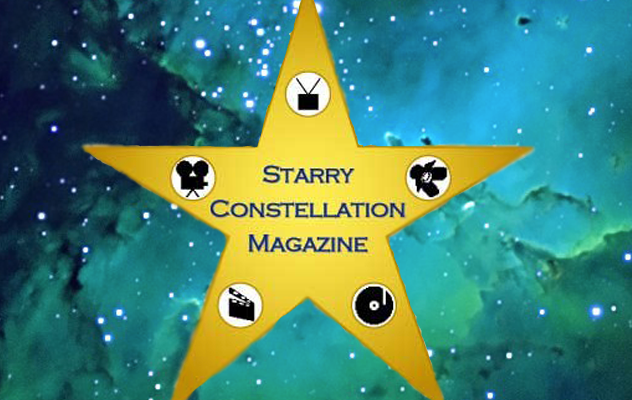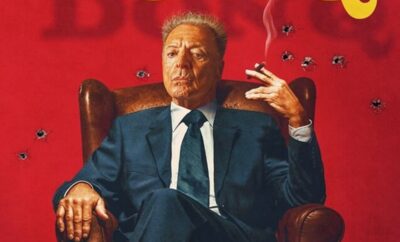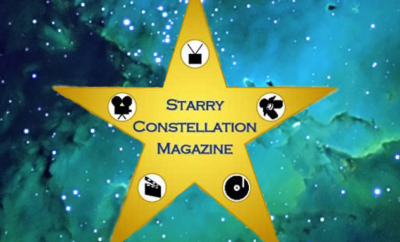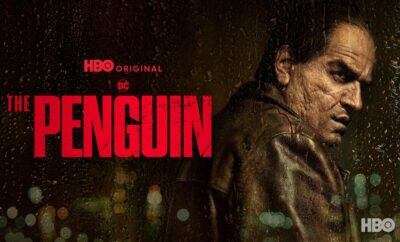
Features
Analyzing Narrative Techniques in Film Essays
Films employ a wide range of narrative techniques to engage audiences and effectively convey their stories on screen. Thoughtfully analyzing how these techniques construct a film’s narrative in essays provides deeper insights into its themes, characters, aesthetics and overall artistic impact. Narrative techniques in film essays demands a keen analytical eye, and for those seeking expert guidance, the option to pay someone to do my paper can provide a nuanced perspective, ensuring a comprehensive analysis of cinematic storytelling methods in academic writing. This post dives into key narrative elements in films including structure, conflict, characterization, cinematography, editing, sound design and more. It aims to equip writers with a framework to critically evaluate and discuss a film’s narrative techniques in essays.
Defining Narrative Structure
The overall architecture and sequencing of events, characters and settings in a film constitutes its narrative structure. This macro-level organization fundamentally shapes how the story unfolds on screen. Film analysts closely examine if the narrative structure is linear or non-linear. In a linear narrative, the story events are arranged chronologically in a cause-and-effect chain of events. Non-linear narratives use more fractured approaches like flashbacks, flashforwards, dream sequences or parallel storylines. Memento is a classic example of a nonlinear structure, with two parallel sequences – one in color moving forward in time, the other black-and-white moving backwards. Analyzing Memento’s narrative structure reveals how it puts viewers directly into the protagonist’s confused state of mind while building an overarching mystery. Comparing linear and nonlinear approaches provides insight into the different modes of audience engagement and interpretative demands created.
Examining Linear and Nonlinear Structures
Linear narratives tend to feel more straightforward and easier to follow, creating a reassuring sense of narrative stability and closure. Films like The Wizard of Oz employ a classic linear quest narrative as Dorothy journeys through Oz, meets companions and confronts obstacles before returning home. On the other hand, nonlinear films fragment conventional storytelling modes. This forces greater cognitive involvement from viewers to piece events together. Quentin Tarantino uses nonlinear vignettes moving across time in Pulp Fiction. Discussing whether a film adopts a linear or nonlinear narrative structure examines assumptions about viewer engagement levels. It also reveals how scrambled narrative timelines might mirror altered mental states or subvert conventions.
Plot-driven vs Character-driven Stories
In conjunction with broader narrative structure, stories can be categorized as plot-driven or character-driven. Plot-driven films emphasize narrative events, action and mysteries that propel the plot forward. The protagonist’s main function is reacting to events. Citizen Kane is a plot-driven story structured around reporter Jerry Thompson’s investigation into newspaper mogul Charles Foster Kane’s life, with flashbacks slowly revealing the mystery. In contrast, character-driven narratives focus on developing nuanced protagonists over plot events. The interest is in the character’s growth and emotional landscape versus twists and revelations. Richard Linklater’s Boyhood is a poignant character study chronicling a boy’s maturation process from childhood to adolescence. Analyzing whether a film is plot or character-driven provides insight into its narrative focus and interest in developing complex characters versus crafting an intriguing story.
Crafting Narrative Conflict
Conflict is central to any film narrative, creating the friction that sets events in motion. Without conflict there is no drama, tension or stakes in the story’s progression. Analysts closely examine the central conflict at the story’s core and how different conflicts propel the narrative forward and fuel audience investment.
Examining Central Conflicts
What is the primary obstacle or challenge the protagonist faces? Examining the central conflict reveals the film’s main dramatic situations and tensions. The conflict could be external with the protagonist grappling against an outside force like the villain, nature or society. In The Avengers, the superheroes battle against megalomaniac Loki trying to subjugate Earth. Or the conflict can be internal arising from the protagonist’s psychological hang-ups, moral dilemmas or personality flaws. In Black Swan, ambitious ballerina Nina Sayers wrestles with her inner demons that threaten to consume her. Analyzing central conflicts illuminates the primary drivers of audience engagement and the film’s thematic interests.
External vs Internal Conflicts
While most films use both, essays can assess differences between external and internal conflicts as dominant narrative forces. External conflicts arise from tangible roadblocks the hero must overcome. Disaster films like The Martian center on protagonists combating physical peril and obstacles. Analyzing external conflict reveals how the protagonist’s capacities are tested. Internal conflicts involve intangible inner struggles the hero must resolve. Psychological thrillers like Silence of the Lambs hinge on disturbed minds and moral dilemmas. Assessing internal conflicts shows how characters evolve in overcoming their inner demons. Well-rounded narratives effectively balance both external and internal conflicts. Frozen interweaves external conflict between sisters Anna and Elsa with Elsa’s internal struggle controlling her magical powers. Multi-dimensional conflicts engage wider spectrums of audience emotion.
Conflict Escalation and Resolution
A compelling conflict arc sees tensions steadily escalate before reaching a climax and eventual denouement. Analysts look at how conflicts build over a narrative before the final resolution. In classic three-act structures, the inciting incident in Act 1 sets conflict in motion. Tensions rise through Act 2 as the protagonist encounters increasing obstacles. At the climax, conflicts reach their zenith with the protagonist confronting their worst hurdle before the resolution brings catharsis. The Dark Knight builds increasing conflict between Batman and the Joker, culminating in their final showdown when Batman stops the Joker’s nihilistic chaos but loses Rachel. Assessing conflict escalation provides insights into pacing, staging of turning points and satisfying conclusions.
Crafting Complex Characters
Dynamic, multidimensional characters provide the beating heart that emotionally anchors narratives. Analyzing how films employ various techniques to characterize protagonists and elicit audience investment is critical to appreciating skilled cinematic storytelling.
Archetypes and Character Tropes
The character types populating most mainstream narratives can be categorized as archetypes or common tropes drawn from myth and folklore. The protagonist likely fits an archetype like the Hero, Outlaw, Mad Scientist or Wizard. The challenges they face also constitute archetypes including the Evil Tyrant, Femme Fatale or Forbidden Love. Supporting characters fill roles like the Sidekick, Threshold Guardian or Trickster. Analyzing archetypical characters provides insights into the patterns writers use to quickly establish familiar character functions. However, one-dimensional archetypical characters risk feeling flat. Multilayered protagonists blend archetypes in novel ways for more compelling depth. Kill Bill’s protagonist exhibits the Bride archetype, Outlaw motifs and Hero’s journey, crafting an iconic heroine. Layering archetypes in creative combinations engages more complex audience emotions.
For students seeking a reliable academic partner, an exploration of an Academized review offers valuable insights, providing a well-rounded perspective on the support and expertise available for mastering the art of film analysis in academic writing.
Character Growth and Change
While archetypes jumpstart characterization, dynamic protagonists undergo emotional growth and change through their journeys. Assessing character arcs identifies key transformation points. Bank manager Andy Dufresne in Shawshank Redemption retains his humanity despite the dehumanizing prison system, eventually escaping and moving on with hope instead of resignation. His character growth inspires hope in audiences too. Flatter character arcs see protagonists undergo little change. James Bond retains his ultra-spy persona with charm intact despite new missions and women. Comparing developments in character arcs shows how stories either deepen or remain anchored in established personas.
Defining the Hero’s Journey
Joseph Campbell’s Hero’s Journey template codifies the archetypal stages of the protagonist’s transformation in many narratives. Departure sees the hero receive a call to adventure that disrupts their ordinary world. Initiation involves tests, allies and enemies as they cross the threshold into unfamiliar worlds. The return phase brings the culmination of the quest and reintegration into a renewed reality. Evaluating how the Hero’s Journey stages appear in films like Star Wars shows how writers rely on tested narrative patterns. But deviations from the template also occur. Analyzing variations reveals how writers expand audience expectations.
Character Perspective
Beyond archetypes and transformations, films leverage subjective, first-person character perspective to immerse audiences in protagonists’ inner worlds directly. Voice-over narration explicitly articulates characters’ thoughts. In Goodfellas, Ray Liotta’s Henry Hill directly narrates his own rise and fall in the mob. More advanced techniques like subjective point-of-view shots or free-flowing stream of consciousness editing provide direct access into characters’ perspectives and mental processes. Being John Malkovich uses extended POV sequences putting viewers into Malkovich’s subjectivity. Discussing character perspective techniques reveals how films generate empathy, encapsulate themes and provide commentary through characters’ subjective visions.
Cinematic Style and Visual Storytelling
Films communicate narratives as much through cinematic style and visual aesthetics as dialogue and plotting. Analysts closely read the impact of cinematography, lighting, production design and editing upon storytelling.
Cinematography Techniques
Cinematography encompasses camera placement, movement and framing techniques vital to storytelling. Camera angles carry important connotations. High angles can make characters seem small or powerless while low angles lend importance and dominance. In Citizen Kane, low angled shots filmed from below exaggerate Kane’s size during his rise. But as his fortunes change, high angled shots loom over Kane, emphasizing his diminished status. Extreme long shots of tiny figures against huge backdrops convey epic scale and isolation. Medium shots frame characters
intimately while close-ups emphasize emotions. Panning and tracking shots follow action fluidly. Handheld camerawork creates visceral immediacy. Discussing cinematography choices reveals their impacts on tone, characterization and themes.
The Impact of Color Palettes
A film’s dominant colors shape mood and atmosphere. Warm palettes with reds, oranges and yellows convey comforting vibes. Cooler blue, green and grey tones feel more solemn or peaceful. Analysts examine how color design choices fit specific genres. Gritty crime thrillers often use washed out colors and darker lighting while comedies employ bright, vibrant hues. Sci-fi films like The Matrix utilize green filtered, monochromatic palettes to evoke digital environments. Evaluating color patterns shows how they subtly influence emotions beyond literal meanings.
Lighting Aesthetics and Symbolism
Lighting similarly affects mood and drama. Low key lighting produces strong contrasts between shadows and highlights for heightened atmosphere. The Godfather films use low key lighting in opening wedding scene to foreshadow tragic events amid surface joy. High key lighting minimizes shadows for more uplifting tones. Romantic comedies often employ high key brightness. Analysts also assess lighting symbolism. Bright illumination represents optimism, truth and hope. Darkness symbolizes the unknown, despair and evil. Chiaroscuro lighting with sharp contrasts between dark and light highlights moral dualities. Discussing lighting aesthetics provides insights into tonal impacts and symbolic connotations.
Editing Rhythms and Flows
Editing quilts together shots to propel storytelling rhythms. Analysts examine editing pace and continuity to evaluate impacts on narrative progression. Rapid editing stitches together brief shots for visceral, frenetic pacing during action sequences. Whiplash uses fast cuts to convey the pulse and tempo of drummer Andrew’s music. Slow dissolves and long takes ease pacing to let scenes breathe. In Lost in Translation, lingering shots emphasize the contemplative mood. Discussing editing rhythms shows how films modulate experiential qualities and narrative urgency. Jump cuts break continuity to convey disjointedness. Match cuts stress continuity between scenes thematically or visually. Evaluating transitions shapes interpretations.
Montages and Symbolic Editing
Montages sequence together thematic shots driving storytelling through visual association versus linear cause-effect. Rocky’s famed training montage conveys hard work and determination through rapid slices of exercise. Symbolic editing juxtaposes seemingly unconnected shots to generate meaning. In Battleship Potemkin’s Odessa Steps sequence, editing between civilians’ massacre and detached soldiers dehumanizes the violence. Analyzing montage and symbolic editing reveals nuanced storytelling possibilities beyond literal plot points.
The Emotive Power of Sound Design
Films fully leverage audio aesthetics along with visuals to immerse audiences and cue emotional responses. Essayists evaluate key sound techniques enhancing cinematic storytelling.
Musical Scores and Motifs
Music sets the emotional atmosphere more overtly than any visual technique. Leitmotifs become musical shortcuts to characters or ideas. The cascading two-note Jaws theme instantly evokes shark attacks. Star Wars leitmotifs represent characters like Darth Vader. Analysts examine how scores punctuate different genres. Romantic dramas swell with soaring strings and piano melodies. War films incorporate martial snare drums while horror films use unsettling atonal tones. Discussing film scores provides concentrated insights into emotional manipulation.
Diegetic and Non-Diegetic Sound
Diegetic sound emanates from the film’s world like character dialogue and ambient noise. Non-diegetic sound added in post-production provides an external omniscient perspective like voiceover narration. Diegetic sound pulls viewers into the story while non-diegetic audio offers privileged commentary. Baby Driver‘s synchronized diegetic soundscape of revving engines and tire squeals makes the car chases visceral. Voiceover narration in No Country for Old Men provides philosophical commentary on events. Distinguishing diegetic and non-diegetic sound reveals stylistic choices for immersion versus distance.
Sound Motifs and Symbolic Sound
Icons like lightsabers take on greater meaning via associated sound motifs. The T-Rex roar in Jurassic Park represents danger. Sound symbolism establishes audio motifs associated with characters or concepts. High-pitched bell tones in Midnight Cowboy convey innocence and frailty. Low rumbles represent ominous trouble brewing. Discussing sound symbolic meanings demonstrates the medium’s aural power beyond visuals alone.
Conclusion
Films employ an intricate symphony of narrative and stylistic techniques to engage audiences emotionally and intellectually. Analyzing elements like narrative structure, conflict arcs, characterization, cinematography, editing and sound design provides critical insights into a film’s artistic potency. Developing a vocabulary to discuss techniques and their impacts enables richer dissection of cinematic texts. Whether assessing mainstream blockbusters or art house fare, probing narrative and style elucidates the myriad decisions that consciously craft cinematic experiences and meanings.





You must be logged in to post a comment Login